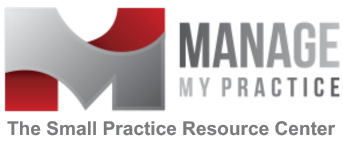Do not incentivize and reward your billing staff for reduced days in accounts receivable, increased collections or decreased non-contractual (bad debt) write-offs! I bet you thought I was going to say that billers are paid to do a job and they should not be...
Blog
Who’s Listening to Our EHR Issues?
We hear more and more every day about EHR problems and physician dissatisfaction with performance and usability, and the way the federal government makes them use it. So, who should physicians complain to? Of course you should...
Telemedicine Pioneers: HiTech-Doctors
We introduced readers to HiTech-Doctors several years ago before the telemedicine boom really hit. Today, many physicians are thinking seriously about telemedicine and how adding it to their practices could meet patient...
Wearables Will Soon Be Part of Major Shift In Medical Practice
For a long time the idea of wearable health tracking devices seemed like an idea out of science fiction, but these days the technology is real and cost effective, and wearables will have a big effect on how your practice operates. Here with more insight on the nascent...
CMS and AMA Make ICD-10 “Family” Clarification
Clarifying Questions and Answers Related to the July 6, 2015 CMS/AMA Joint Announcement and Guidance Regarding ICD-10 Flexibilities Question 1: When will the ICD-10 Ombudsman be in place? Answer 1: The Ombudsman will be in place by October 1, 2015. Question 2: Does...
A Manage My Practice Classic: Five Simple but Powerful Performance Evaluation Questions
This continues to be one of our top ranking posts of all time. This tells me that people continue to struggle with the process of evaluating employee performance. The point of the "Five Questions" evaluation is not to focus on the fact that the employee is often tardy...
What Tools Will You Need for the ICD-10 Transition? Q & A with Swiftaudit
October 1, 2015 is a date that looms large for everyone involved in the operational and financial functions of any medical practice. At the time of this post's publishing, practice administrators, managers, billers and coders have less than three months...
July 15-16 CMS Webinars: New Payment Model for Joint Replacements
UPDATED INFO: These recorded webinars are now available here. --------------------------- On July 9, 2015 the Centers for Medicare & Medicaid Services (CMS) announced the Comprehensive Care for Joint Replacement (CCJR) model, a proposed payment, quality, and care...
Before Starting a New Medical Practice Ask Yourself These 10 Questions
Can I go without any income from a new practice for 3-6 months? Do I have another income stream or can I continue to work part-time at the hospital or at an urgent care while I'm building my practice? Can I...
The CMS ICD-10 Announcement: What It Means to Your Practice
First, the game-changing announcement below means that a sigh of relief is in order. Some of the anxiety surrounding potential financial disaster should be abated. CMS announced: "Medicare review contractors [MACs and RACs] will not deny physician or other...
Bringing you the latest healthcare news!
The Manage My Practice Blog keeps our readers up to date with the latest healthcare news, trends and analysis.
Quick Links
Get in touch
Phone: (919) 370 0504
